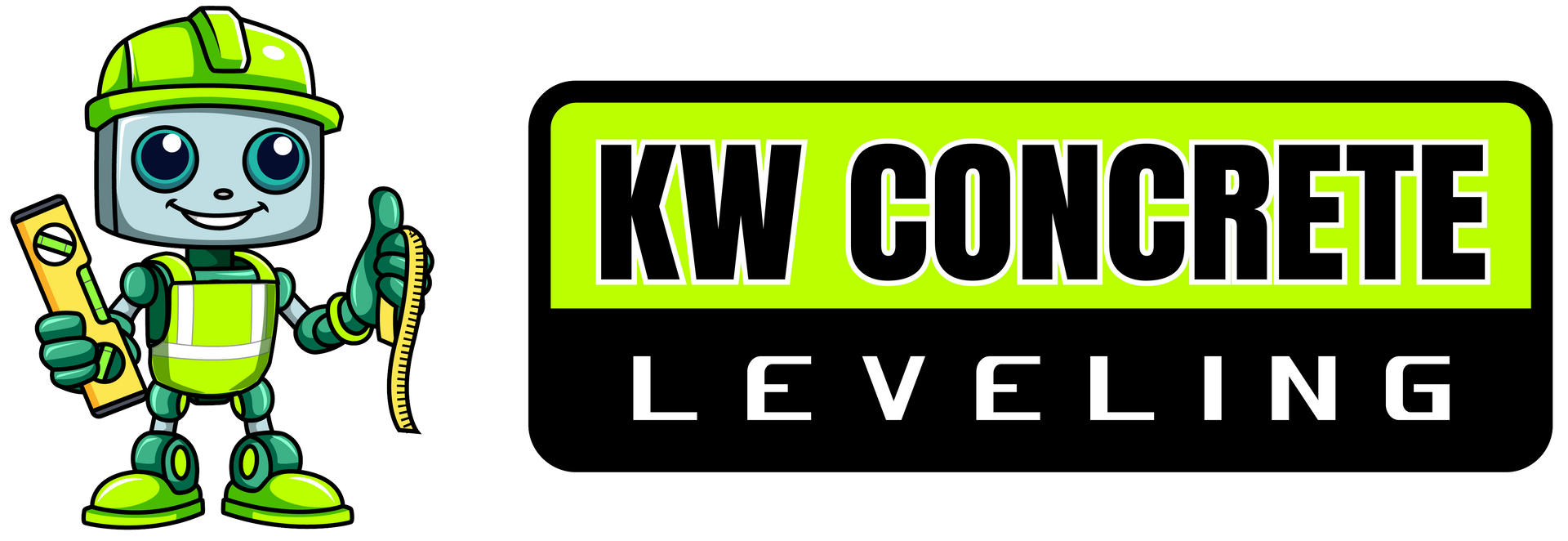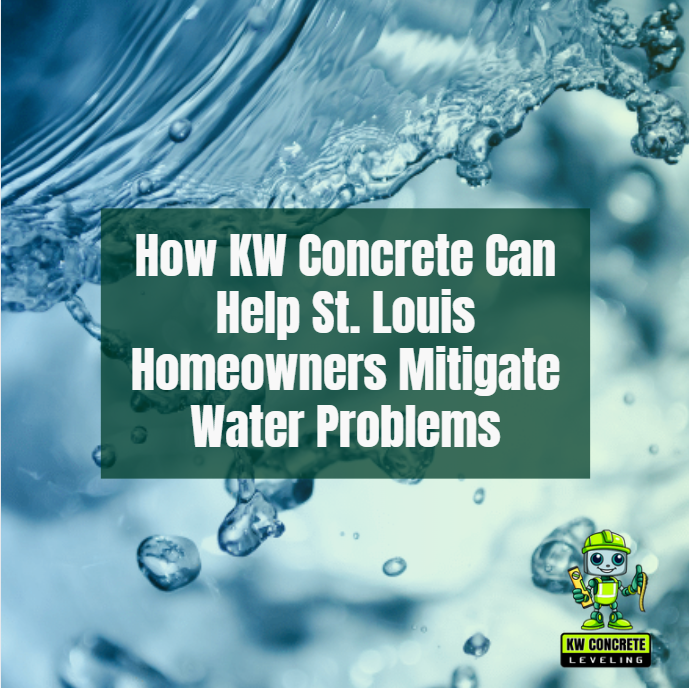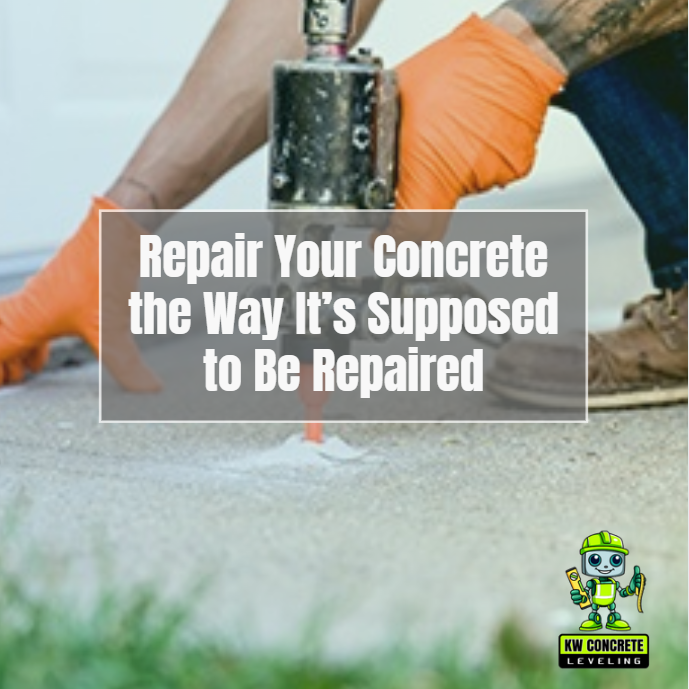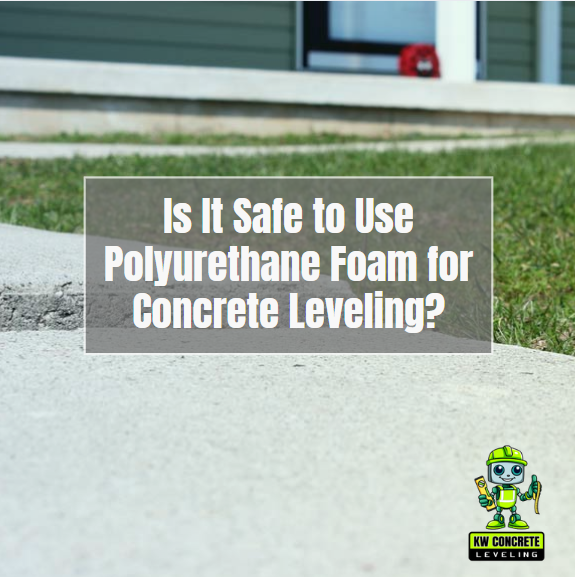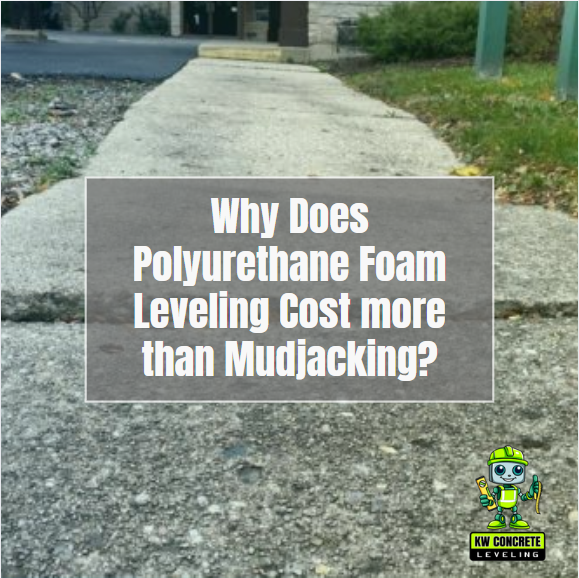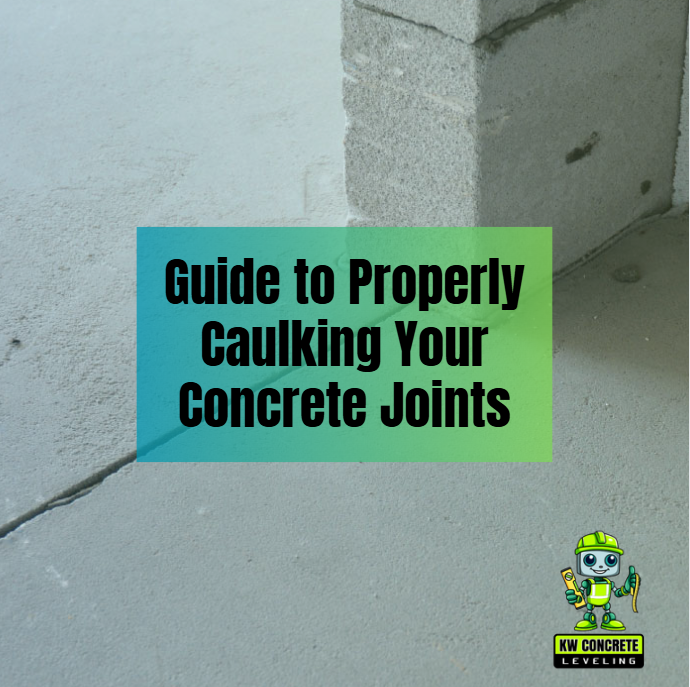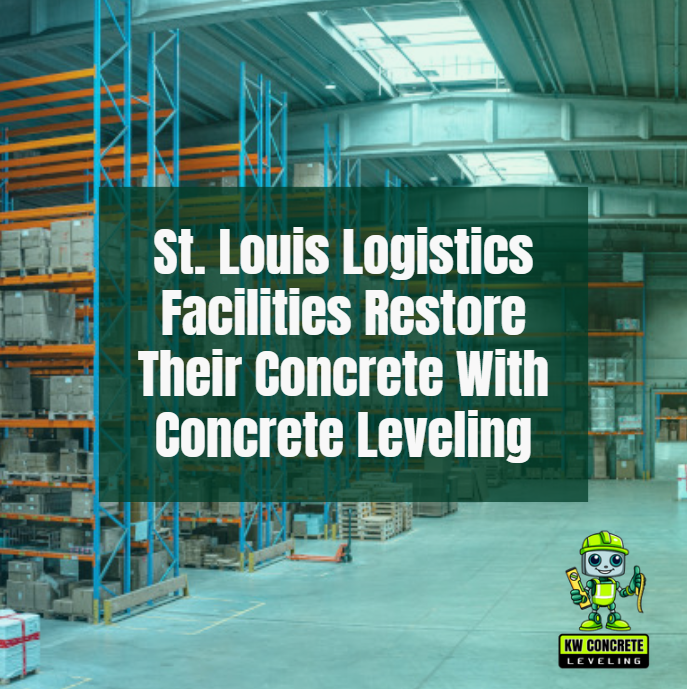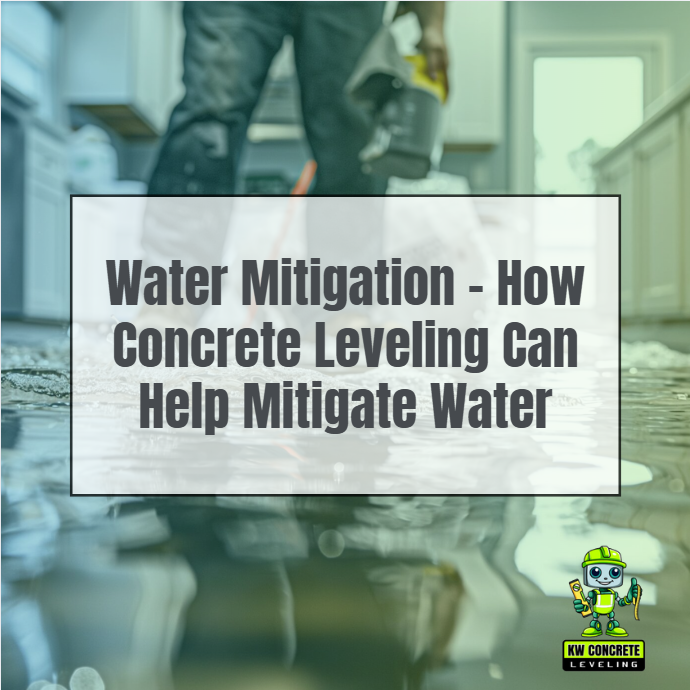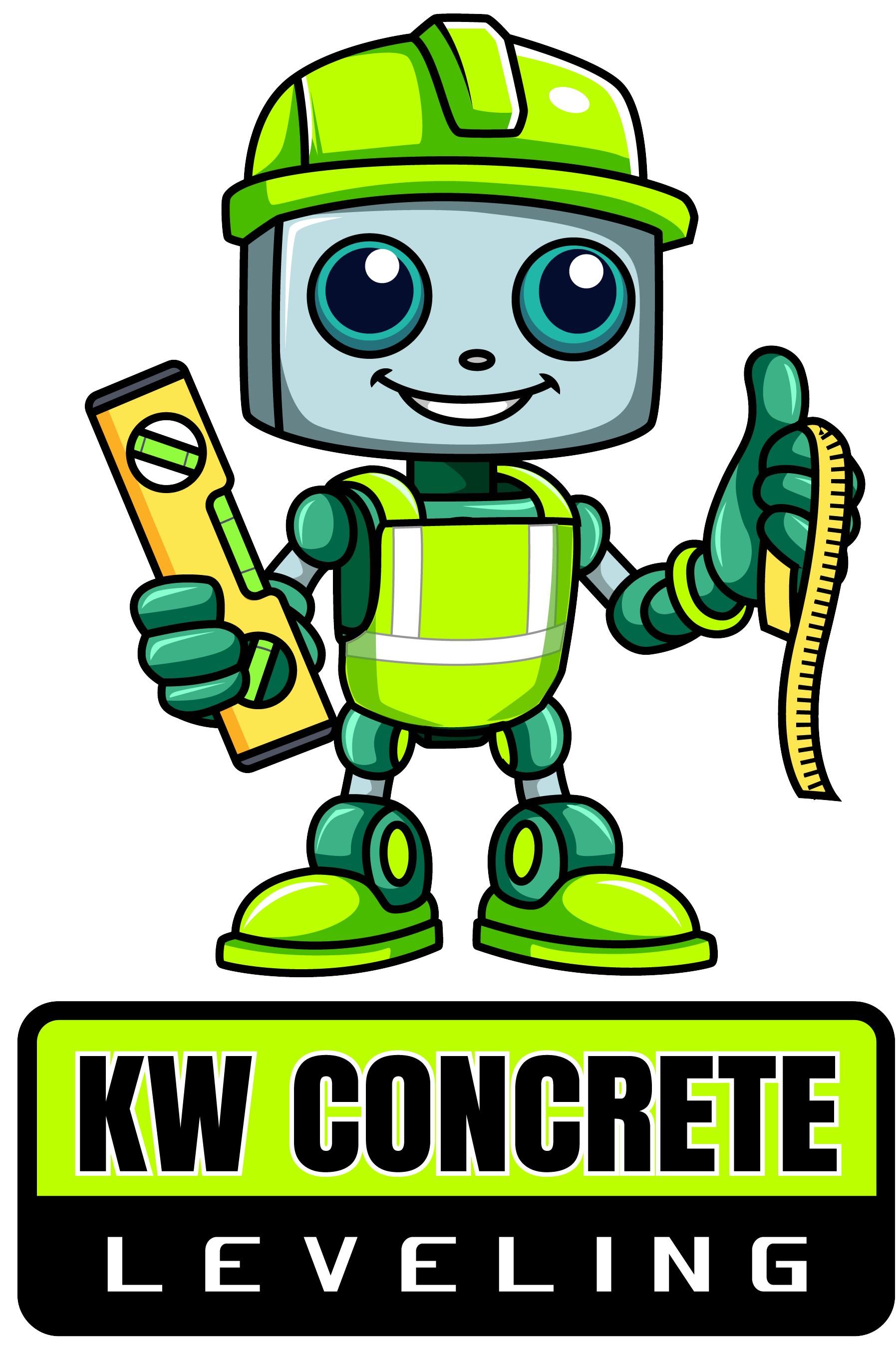Phone:
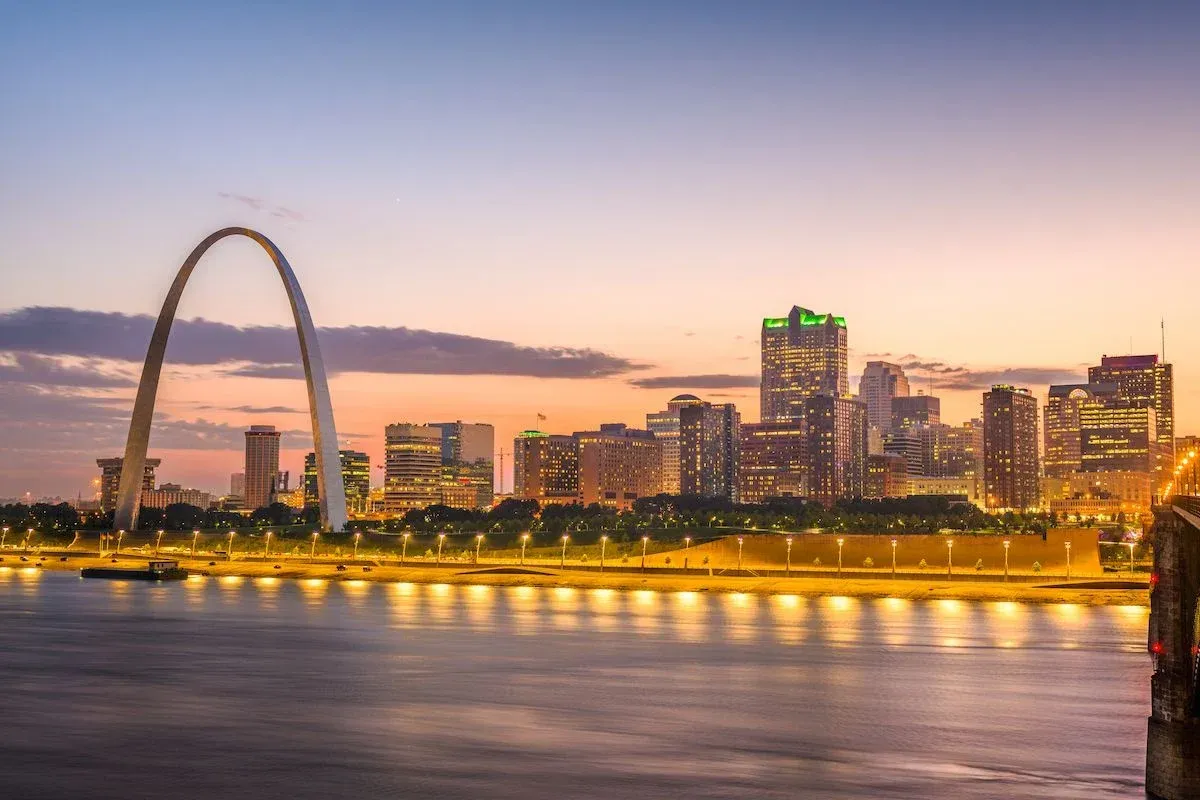
The concrete repair process involves fixing damaged or deteriorating concrete surfaces to restore their strength, functionality, and appearance.
When it comes to repairing concrete in St. Louis, knowing the different repair types and their respective costs can help homeowners and property managers budget and plan effectively.
In this post, we’ll walk you through the key considerations for estimating a concrete repair project, explain common types of concrete repairs, discuss typical causes of these issues, and give you insights on costs for each.
By the end, you’ll have a clear picture of what’s involved and whether a DIY approach or professional service is best for your project.
At KW Concrete Leveling in St. Louis, we are a premier choice for all concrete repair project and are committed to providing clarity in this industry regarding price, techniques, about this business, and more.
Estimating the Cost of Concrete Repairs
Estimating the cost of a concrete repair project involves several factors: the size of the area needing repair, the type of damage, the tools and materials required, and whether you’re opting for a DIY approach or hiring a professional.
Concrete repair can encompass anything from filling surface cracks to removing and replacing damaged slabs. Each repair method comes with its own set of materials, time, and labor requirements, which directly impact the overall cost.
Let’s explore the most common types of concrete repairs, their
causes, and their
costs.
Causes of Common Concrete Issues
- Temperature Changes: Seasonal temperature shifts can cause concrete to expand and contract, leading to cracks and surface damage.
- Soil Erosion and Settling: Water washing away soil beneath a slab causes sinking, creating uneven surfaces that need leveling.
- Tree Roots: Roots growing near concrete slabs often push against and disrupt the slab's stability, causing cracks and shifts.
- Water Exposure: Prolonged moisture can lead to discoloration, surface wear, and, if absorbed into cracks, deeper structural issues.
- Aging and Wear: Regular wear and environmental exposure naturally degrade concrete surfaces over time, requiring maintenance and, eventually, repair.
Types of Concrete Repairs and Their Costs
| Types of Repairs | Cost to Hire a Professional |
|---|---|
| Crack Filling or Sealing | $3 to $8 Per linear foot |
| Surface Patching or Resurfacing | $3 to $10 Per square foot |
| Lifting or Leveling sunken or Uneven Slabs | $500 to $1,500 Per Slab |
| Removing Tree roots or Stumps | $100 to $500 |
| Replacing Severely Damage Slabs | $6 to $15 Per square foot |
| Removing Stains or Discoloration | $0.50 to $2 Per square foot |
Crack Filling or Sealing
Purpose:
Cracks in concrete can allow water to seep in, which can worsen the damage over time.
Cost Factors:
Crack filling or sealing is a simple maintenance procedure for surfaces such as asphalt and concrete. It costs about $3 to $8 a linear foot but depends on the crack
width and depth. Larger or deeper cracks require more material and may be more expensive.
Surface Patching or Resurfacing
Purpose:
Surface damage, like small holes or minor pitting, can be repaired through patching or resurfacing to restore the appearance and functionality of the slab.
Cost Factors:
Costs are generally lower for minor patchwork but increase if a complete resurfacing is necessary. Surface area, the type of repair mix, and any finishing treatments (such as staining or polishing) also play a role in determining the cost. The cost of this repair ranges from
$3 to $10 Per square foot
Lifting or Leveling Sunken Concrete
Purpose:
Concrete slabs can become uneven over time due to soil settling, water erosion, or poor initial installation. concrete lifting/leveling will help avoid tripping hazards, a poor appearance, or to restore your concrete.
Cost Factors:
The cost depends on the number and size of slabs being lifted, as well as the
material used for the injection. The cost typically ranges from
$4-6 per square foot but can vary depending on the depth the concrete is sinking and additional work required to restore the concrete. Additionally, the average cost of a
driveway leveling
or slab lifting will range from
$750 to $2500-$3000. Every company in St. Louis will have a different minimum price and quote for your specific project, so it's important to call 1-3 companies to understand the full scope of the project and take into account whether the company has insurance and a valid warranty.
Removing Tree Roots or Stumps
Purpose:
Tree roots can grow under concrete, causing slabs to lift, crack, or break.
Cost Factors:
The average cost of tree root removal is between
$100 and $750. But this price can vary depending on the
root system size, depth, and spread. Larger root systems that are deeply embedded or spread over a large area may require more time, special tools and labor which may increase costs. If roots are located in an inaccessible area - near buildings, fences or underground utilities - additional care and possibly more advanced equipment may be needed, adding to the cost.
Replacing Severely Damaged Slabs
Purpose:
If the concrete is extensively damaged or crumbling, replacement might be the most effective long-term solution.
Cost Factors:
The process of replacing severely damaged concrete slabs is often more expensive than repairs. Unlike patching or resurfacing, slab replacement requires several labor-intensive steps: removing damaged concrete, preparing the ground for a foundation, and pouring and finishing a new slab. Each of these steps requires materials, skilled labor and specific tools, which add cost. Concrete slab replacement costs on average $6 to 15 per square foot.
This range is dependent on the slab thickness, the concrete quality, local labor rates and any additional groundwork that may be required (such as leveling or adding a new sub-base).
Removing Stains or Discoloration
Purpose:
Stains from oil, chemicals, or natural discoloration from weather exposure can detract from the appearance of concrete surfaces.
Cost Factors:
The price of concrete cleaning and treatment varies between
$0.50 and $2 per square foot
and is determined mainly by the severity of the stains, further treatments and cleaning agent. Basic options such as pressure washing or an acid wash are usually on the low end of the cost spectrum and typically remove surface dirt and minor stains. However, for deeper stains or a more polished look, additional treatments (staining, sealing or applying a concrete overlay) may be more expensive.
Professional Concrete Repair: Is It Worth It?
Opting for professional concrete repair can be an effective solution for maintaining the longevity and appearance of concrete surfaces. However, whether it’s worth it depends on several factors, including the condition of the concrete, the scope of repairs needed, and your budget.
Here’s a breakdown of the pros and cons of hiring a professional concrete repair service to help you make an informed decision.
Pros of Professional
- Expertise and Skill - Problem Diagnosis and Advance Techniques
- High-Quality Results - Aesthetic Appeal and Long - Lasting Solution
- Time and Effort Saved - Convenience and Efficiency
- Safety Considerations - Proper Safety Protocols and Liability Coverage
Cons of Professional
- Higher Costs: Professional services are usually more expensive, especially for small, non-urgent repairs.
- Scheduling and Availability:
You may need to schedule repairs, and it could take time to get the work done, depending on the contractor’s availability.
If You’re Thinking of DIY Concrete Repairs
For minor concrete repairs like crack filling or surface cleaning, a DIY approach can save you a significant amount. Many stores carry affordable concrete repair products for these smaller projects.
However, more complicated repairs like slab lifting, extensive patching, or slab replacement generally require professional-grade equipment and experience. DIY slab leveling kits are available but are often less reliable and can end up costing more if corrections are needed later.
When evaluating
DIY versus professional services, consider the risks of incomplete repairs, the longevity of the fix, and any costs associated with
repeat repairs or corrections.
Conclusion: Finding the Right Concrete Repair Solution for Your Needs
Concrete repair costs in St. Louis vary widely depending on the type of damage, the repair method, and whether you choose a professional or DIY approach. Minor repairs, such as crack sealing or surface cleaning, are relatively low-cost and manageable as DIY projects.
However, extensive repairs like slab lifting or full slab replacement typically require professional intervention for reliable, long-lasting results.
By understanding the types of repairs available and what causes common concrete issues, you’ll be better prepared to assess your specific repair needs and choose a solution that fits both your budget and your long-term goals for durability and appearance.
How to Choose the Right Concrete Repairing Company in St. Louis
Choosing the right concrete repair company, like KW Concrete Leveling, in St. Louis can be easy if you know what to look for. Here’s a simple guide:
1. Experience & Specialization
Look for companies with extensive experience in concrete repair and leveling, specifically in the St. Louis area. KW Concrete Leveling specializes in these services, which can be more reliable than general contractors.
2. Customer Reviews & Testimonials
Check online reviews on Google, Yelp, and the company’s website. Look for recent reviews that speak positively about the quality of work and customer service.
3. Licensed & Insured
Ensure the company is fully insured to work in Missouri. This protects you in case of any accidents or damages during the repair process.
4. Free Estimate & Transparent Pricing
A reputable company should offer a free, detailed estimate. Be cautious of unusually low quotes, which may indicate poor quality materials or unexpected costs later.
5. Warranty on Repairs
A good concrete repair company will stand behind its work with a warranty. This shows confidence in their repair quality and commitment to long-lasting results.
6. Techniques and Equipment
Ask if the company uses modern, effective techniques like polyurethane foam leveling. KW Concrete Leveling uses up-to-date technology for precise, durable repairs.
By checking these factors, you’ll be more likely to choose a reliable, experienced concrete repair company like KW Concrete Leveling for your project in St. Louis.
If you need help today, reach out to us at
314-661-5440 or
contact us online here!
Concrete Repair FAQ's
What are the common methods for repairing concrete?
Concrete repair methods depend on the type and severity of damage. Common techniques include patching for small cracks or surface spalls, epoxy injections for structural cracks, resurfacing for worn areas and polyurethane foam injections for voids and lifting. Each method requires specific tools and expertise to make a permanent repair.
How long does concrete repair last?
The life of a concrete repair is dependent on the repair quality, materials used, and environmental exposure. A properly done repair with quality materials can last 5-10 years or more.
Routine maintenance and sealants can also extend the life of the repair, especially in high traffic or harsh weather.
Call For An Estimate!
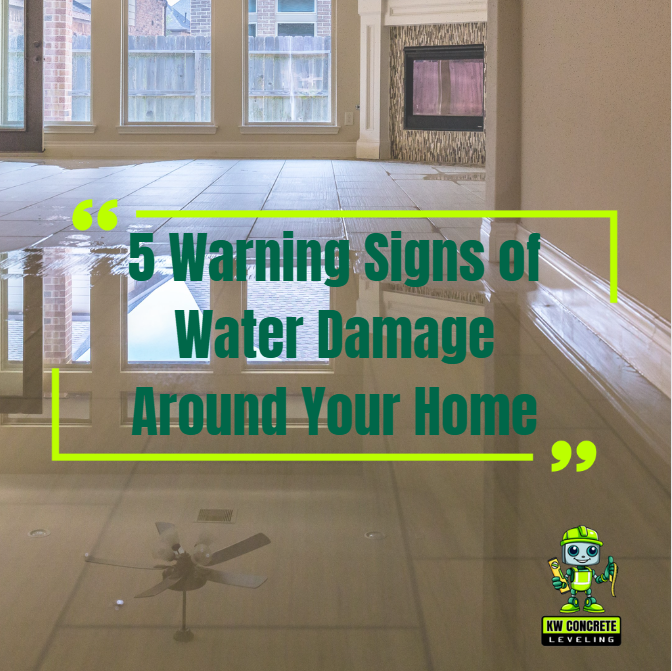
Quick Links
Contact Details
Phone: 314-661-5440
Location: St. Louis Missouri
Hours:
- Mon - Fri
- -
- Sat - Sun
- Closed
Privacy Policy | Terms & Conditions
All Rights Reserved | KW Concrete Leveling in St. Louis
